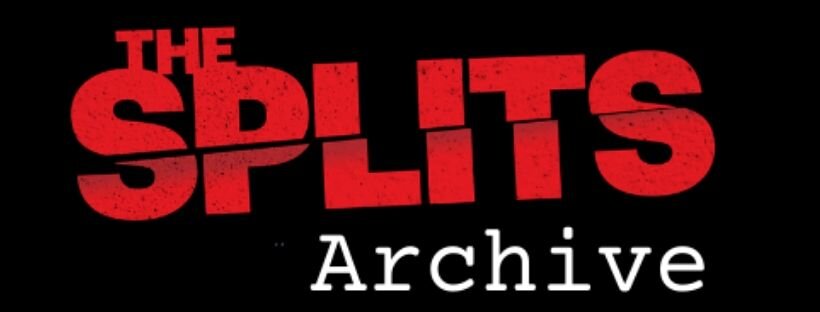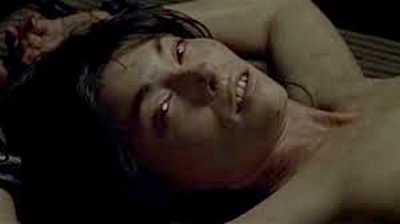Title Fright: Deadgirl vs The Corpse of Anna Fritz!
WARNING: SPOILERS
Why pit Deadgirl (2008) against The Corpse of Anna Fritz (2015)?
Well, they are both about young men who have sex with dead women – a zombie in the former, an expired film star in the latter.
This is not usually my thing, but in the era of #metoo, extreme metaphors for sex crimes feel useful rather than gratuitous.
I made the connection about a week ago when I saw the following tweet:
I was instantly reminded of Deadgirl, even though it’s almost ten years older.
I think this is my favourite shot of deadgirl's face. Look at her bright, flickery, uncomprehending eyes and her hungry mouth. She's part zombie, part pornstar, part baby rooting for milk. Just horrible!
Some people see the films as too similar.
And they are similar. But they are also quite different. The really interesting question is, which one is better? Let’s take a look.
WHAT BINDS THESE FILMS...
Beginning
Both Deadgirl and The Corpse of Anna Fritz (DG and COAF from hereon) start with young men letting off steam at a hospital.
In DG, Rickie and JT run down the corridors of an abandoned mental asylum breaking windows and throwing trolleys at walls. In COAF Ivan, Javi and Pau drink spirits and snort coke behind the hospital dumpsters.
Group dynamics
In both films there’s a conversation between the boys where moral norms are broken down – you can’t just go straight into having sex with a dead/undead girl after all.
In both there’s one boy (JT, Ivan) who is already morally detached and leads the charge towards transgression. There are tensions between this character and another (Rickie, Javi) who is horrified by the idea.
Fear of discovery
In both DG and COAF, the boys are terrified of the outside world knowing what they have done. Maternal figures invoke the greatest fear – JT’s last words are “don’t tell my grandma”, while Pau’s dread of his mother finding out makes him commit murder.
The girl
In both, there’s a sense that girls’ minds are difficult, and finding one without a mind is a solution.
In both, the actor playing the girl does most of her acting with her eyes, and this is extraordinarily powerful.
In both, the girl gets her revenge.
…AND WHAT DIVIDES THEM
To decide which film is better, let’s take a look at the differences.
Characters
In DG the boys enlist your sympathy. They’re outsiders - born without priviledge into families that are messed up or non-existent. JT’s grotesque attachment to the dead girl gives us a window into his loneliness. Rickie is a vulnerable and trying to do the right thing.
Whereas COAF is a nightmarish morality tale with limited characterisation. We never learn anything about the three ‘horndogs’ past. We only get to know them in the context of the morgue. What we see is deeply unpleasant.
The girl
In DG the dead girl is a zombie. She survives bullets, strangulation, beatings and a broken neck. She has no reaction to being raped but if you get too close she takes a bite.
Whereas in COAF Anna is actually alive. She’s a real person. She’s not a supernatural conceit or a thought experiment.
Moral payoff
DG’s director calls the film a coming of age story. When Rickie realises the dead girl is the best he can expect, he enters into a sad sort of manhood. The dead girl is a catalyst for his - very crooked – development. As such the film isn’t about her, it’s about him. Sex with a woman who cannot consent is a metaphor for the male characters’ stunted lives. The film does condemn this way of relating to women, but only indirectly.
COAF on the other hand whacks you over the head with its message – having sex with a corpse is bad and wrong. The ending – which I won’t give away – suggests the film is really about Anna, not the boys who rape her. It suggests she’s been through something much worse than what happens in the morgue. Essentially that being raped by men who think you’re dead is not that different from the casting couch, and what you’re really seeing is Anna’s previous life.
WHICH FILM IS BETTER?
To sum up, DG is a film for the age of Donald Trump and Brexit, when you choose something you really shouldn’t. It’s a sympathetic portrait of people who are genuinely suffering and make disastrous choices.
COAF is a film for the post-Harvey Weinstein, post-Jimmy Saville age, when it becomes clear a lot of powerful men don’t think women are actually human.
In other words, they’re both equally relevant! HELP! HELP ME DECIDE! This isn’t a gimmick. Ask anyone who knows me, I’m a legendary fence sitter.
Which do you think should win? Deadgirl or The Corpse of Anna Fritz?

